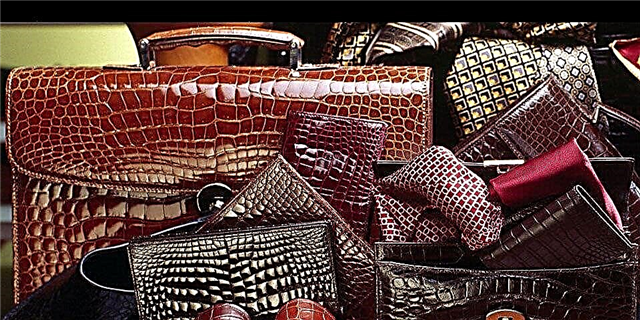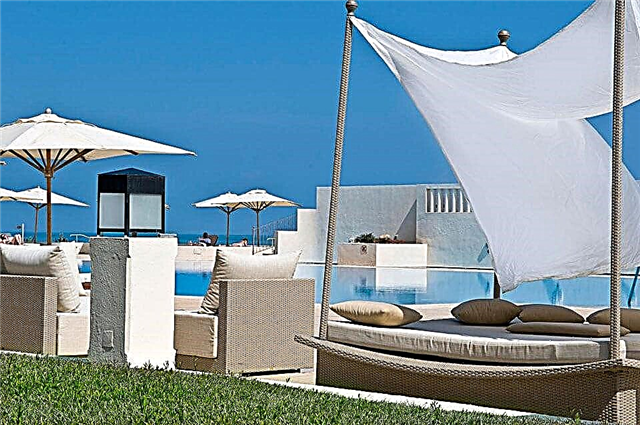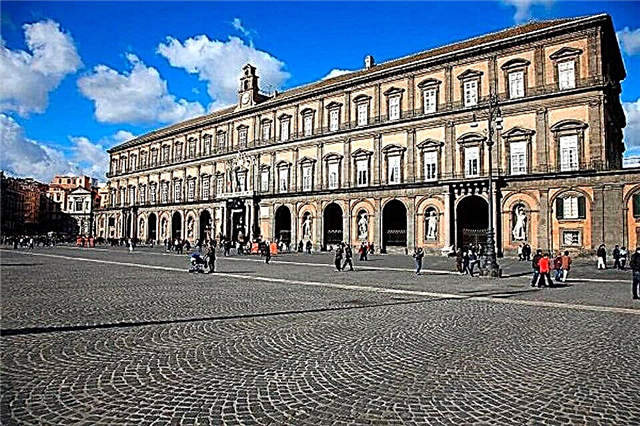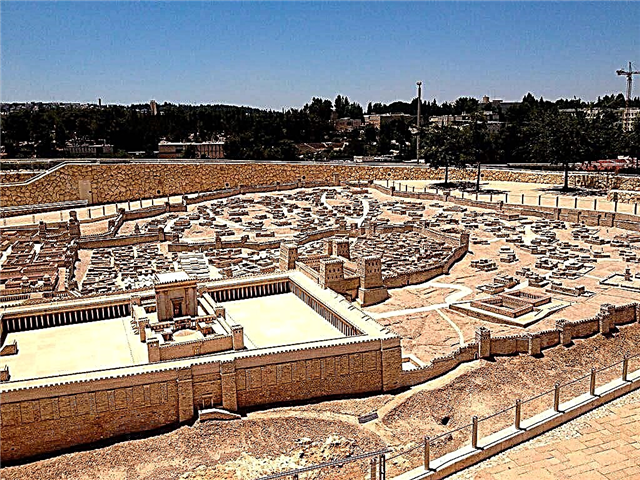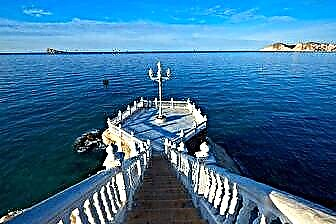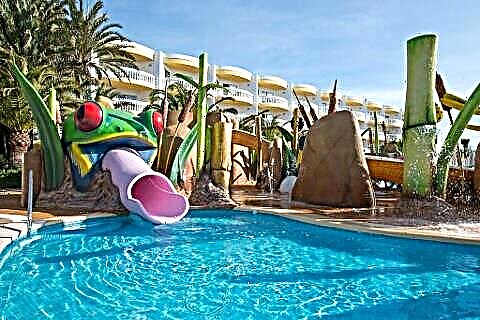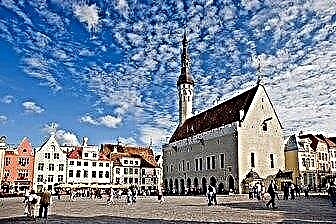Over the course of eight centuries of its existence, Tallinn has never been in anyone's hands. Knightly orders, Sweden and the Russian Empire fought for the fortress and port on the Baltic Sea at different times. As a result, the modern capital of Estonia has become a mixture of different cultures, architectural styles and traditions.
Old Tallinn is a classic example of medieval cities in Northern Europe. In the center there is a fortified fortress with thick walls, where parliament sits, stone streets lined with houses with gabled roofs diverge from the main square, and bell towers of ancient churches rise above the quarters.
The capital of Estonia is the main cultural center of the country. The main museums, theaters and concert venues are located here. Festivals and festive processions are held on city streets throughout the year.

The best hotels and hotels at affordable prices.
from 500 rubles / day
What to see and where to go in Tallinn?
The most interesting and beautiful places for walking. Photos and a short description.
Old city
An urban area steeped in the spirit of the Middle Ages, where the main historical sights are concentrated. It is an interweaving of stone streets and squares, ancient temples, town halls and houses of merchant guilds. Since 1997, the quarter has been included in the UNESCO List of Historical Heritage. The old town consists of the Lower and Upper parts. In past centuries, mainly aristocrats settled in the Upper Town (Vyshgorod).

Town Hall Square and Tallinn Town Hall
The square with the tower is the very center of the Old Town. Once upon a time, public executions took place on the Town Hall Square, and caught thieves were tied to a pillory. Tallinn Town Hall is an architectural monument of the 14th century, built in the Gothic style of Northern Europe. The building hosts various state receptions and other events, on other days it is open to the public for a small fee.

Town Hall Pharmacy
The oldest European pharmacy, which opened its doors in the first half of the 15th century. At the end of the 16th century, the building was leased to Johann Burchard, who laid the foundation for a dynasty of pharmacists who ruled the pharmacy for over 300 years. The pharmacy continues to sell medicines; in one of the premises, a museum has been opened, where you can look at ancient medical instruments. Sweets and souvenirs are also sold on site.

Freedom Square
One of the city squares that appeared in the 19th century on the site of the destroyed Swedish bastion. At the beginning of the 20th century, the territory was paved with stones and market stalls were removed from here. The main attraction of the square is the modern monument of 2009 in honor of the victory of the Estonian troops in the 1918-1920 War of Independence. It often hosts official events, concerts and sporting events.

Tallinn city wall
A very well-preserved fence that defended the city in the Middle Ages. Sections of the wall with a total length of 2 km have survived to this day. and several towers from the 14th century. During the heyday of Tallinn, the height of individual sections of the structure reached 14-16 meters, and the thickness reached 3 meters. The wall was considered one of the most powerful and reliable in Northern Europe. In past centuries, some of the towers served as a prison.

Maiden's Tower
One of the towers of the fortress wall, which, according to the first version, served as a prison for women of easy virtue, unfaithful wives and disobedient brides, and according to the second, it was a haven for women seamstresses. The tower was built in the XIII century along with the city wall, several times during the siege of the city it was destroyed. After the renovation in 2013, a museum and a cafe with a picturesque view of the Old Town were opened in the building.

Tower Fat Margarita
The most impressive tower of the city wall is 20 meters high and 25 meters in diameter. The walls are 5.2 meters thick. The building was built in the 16th century, the nickname "Fat Margarita" stuck to it a couple of centuries later. An imposing structure defended the Tallinn treasury and the harbor entrance. The tower houses the Maritime Museum, where you can learn about the history of seafaring and fishing in Estonia.

Kiek in de Kök
Another defensive city tower, which was erected in the 15th century. Its name is translated from the Saxon language as “look into the kitchen”. The tower received this name for the reason that from its top, the city guards who were in service could watch the hostesses in the kitchens of city houses. Today, there is a museum in the tower, where weapons collections are presented. Also from here begins a tour of the Tallinn underground.

Viru gates
Medieval gate, from which Viru Street leading to the Town Hall Square begins (one of the main tourist alleys of the city). The gate is located in the eastern part of the city wall. Several centuries ago, they served as one of the main entrances to the city. The design has come down to us in an almost unchanged form. The building is sort of separating modern Tallinn from the Old Town, so for local residents it is a symbol.

Lane katarina
A small street in the Old Town with buildings from the 15th-17th centuries. The place is also known as the Craftsmen's Courtyard, as there are numerous workshops for making souvenirs from leather, ceramics, glass. In Katarina Lane, a tourist can buy a unique piece in memory of Tallinn. In the summertime, street cafes serve old-fashioned dishes, and the atmosphere around is a real atmosphere of bygone eras.

The Dome Cathedral
The main Estonian Lutheran temple, the construction of which began in the 13th century. The Estonian name of the church is Toomkirik, officially it is called St. Mary's Cathedral. Many representatives of noble German families are buried here. One of the famous tombs of the cathedral is the grave of the navigator Ivan Kruzenshtern. The Dome Cathedral regularly hosts free organ music concerts.

Alexander Nevsky Cathedral
The main Orthodox church in Tallinn, built in the 19th century at the expense of representatives of the large Russian community. Local residents still perceive it as a symbol of the "violent Russification" of the population. They wanted to demolish the cathedral in 1928. In 1990, after the fall of the USSR, the temple and all property was transferred to the newly formed Estonian government; now the Orthodox Church rents it for services.

Kaarli Church
Neo-Gothic Lutheran Church of the 19th century. Earlier on the site of the modern church there was a wooden chapel of St. Anthony of the 17th century, which burned down during the Northern War. The facade of the building is decorated with a German clock from the beginning of the 20th century. Now the Kaarli parish is a functioning Lutheran church, where services are regularly held, as well as concerts of classical instrumental music.

St Olaf's church
The Church of Oleviste is called in another way. Temple of the XVI century with a spire 124 meters high. For decades, this tower was the tallest in Europe. The spire served as an excellent landmark for ships entering the city harbor. The height of the tower is also its misfortune - lightning struck it eight times, the temple burned three times. The interior of the church is decorated with numerous Gothic vaults, creating an intricate geometric interweaving.

Monastery of Saint Brigitte
The abode is located in the northeastern part of Tallinn. At the beginning of the 15th century, it was considered the largest in all of Livonia. The building did not last long - during the Livonian War, the monastery was destroyed by the army of Ivan the Terrible and since then it has been in ruins. Only the outer frame and the staircase on the bell tower have survived. In 2001, a new building was erected nearby, where nuns of the Order of St.Brigitte.

Niguliste Church
In the Middle Ages, Niguliste was one of the main churches in the city. It is believed that the temple was founded in the XIII century. and was rebuilt several times over the next centuries. In 1944, as a result of the bombing, Niguliste was badly destroyed, and many of the artistic values that were inside were lost. In 1984, after 30 years of restoration, a museum and a concert hall were opened in the building.

Church of the Holy Spirit
One of the temples where the Catechism was read in Estonian for the first time. The oldest city clock of the 17th century is installed on the facade of the church, which is still in use. The temple is closely related to the development of the national culture of Estonians. Inside there are 57 paintings depicting biblical scenes. The paintings were specially placed here so that illiterate citizens could familiarize themselves with the Bible.

Kumu Art Museum
The 2006 Contemporary Museum, designed by the Finnish architect Vapaavuori. The museum complex is a high-quality example of new architecture, a stylish building made of glass and greenish stone. The picturesque Kadriorg Park is located around the building. Collections of Estonian masters from the 18th - 21st centuries are exhibited in Kumu. The exhibitions divided into time periods can be viewed in several thematic halls of the gallery.

Lennusadam Seaplane Museum
Naval Museum located in the former aircraft hangars. Here you can see real military equipment that took part in the battles: submarines, ships, planes and even a steam icebreaker. Many of the exhibits are the only surviving examples of military equipment. The museum also has a cinema and a playground for young children.

Monument to the battleship "Rusalka"
A monument designed by the sculptor Adamson, dedicated to the warship that sank in 1893. The vessel went down as a result of a sudden outbreak of a 9-point storm, 177 crew members were killed. After the disaster subsided, search crews found only a few lifeboats. Further searches for the ship lasted 40 years. The monument was built with donations.

Kadriorg palace and park ensemble
An artificial park with a magnificent Baroque palace. The complex was built by Emperor Peter I for his wife Catherine. The area of the park is about 70 hectares. Here you can walk along numerous alleys, admire fountains, gardens, flower beds, as well as sculptures created by Estonian masters. The landscapes of Kadriorg are reminiscent of Peterhof and Tsarskoe Selo. The park has a house-museum of Peter the Great.

Glen Castle
An ensemble with a park from the late 19th century, located in the city district of Nõmme. The castle was erected according to the design of Baron von Glen in the medieval architectural style on the slopes of the Mustamägi hill. The labor of Tallinn prisoners was actively used at the construction site. In addition to the castle, the project included churches, a town hall, a mud bath and a post office. Apparently, the baron planned to lay the whole city on this place.

Maarjamägi castle
The former summer residence of the Orlov-Davydov count family in the suburbs of Tallinn (the old name of the city is Revel). Under them, the estate was named Marienberg in honor of the wife of the Count Maria. After the victory of the Revolution in 1917, the aristocratic family emigrated to Europe, and after a while the castle began to be used as the residence of the Dutch consul. Since 1975, a branch of the Estonian History Museum has been located here.

Toompea castle
The ancient fortress rises in the very heart of Tallinn on the hill of the same name. The construction has more than seven centuries of history. The Estonian Parliament sits on the territory of the complex. The stronghold was founded by the Danish king Valdemar II. One of the watchtowers of the castle is the Tower of Long Hermann, which reaches almost 100 meters above sea level. The Estonian national flag flies at the top of the tower.

Singing field
An important cultural attraction in the capital of Estonia. Here is a shell-shaped stage, as well as a sculpture by Gustav Ernesax (a famous composer, inspirer and founder of the national Song Festival in the 19th century, which are held every five years). The field also hosts major music events, rock festivals, and famous pop stars perform.

Tallinn Zoo
The zoo appeared in the capital of Estonia in the 40s. XX century. Now it is home to several thousand representatives of the world fauna. Main expositions: bird park, animals of the arctic zone, animals of the tropical zone, elephants. On the territory of the zoo, there are groups engaged in the study of animals. A petting zoo and an adventure park with various interesting attractions are organized for children.

Estonian Open Air Museum Rocca al Mare
Located 10 km. from the capital near the Kopliskaya bay. The museum was founded in the 80s. XX century, it is a complex of buildings from different periods of Estonian history: peasant houses, mills, churches, forges, fishermen's huts, forges. Here you can get acquainted with the life and culture of the local population. Visitors are also given the opportunity to stroll through the picturesque park and get some fresh air.

Tallinn TV Tower
The tallest structure in the country, reaching 314 meters in height. The TV Tower is a popular tourist and cultural center. People come here to visit the observation deck at an altitude of 170 meters, dine in a restaurant, watch interactive installations telling about the history of Estonia and just admire the futuristic interiors. The rebuilt TV tower was reopened in 2012.

Rotermann Quarter
This area originated in the 19th century and was used for the construction of industrial plants and warehouses. Recent major renovations by leading European architects have made the quarter a trendy and popular destination. Large international companies have located their offices here, restaurants, stylish hotels and modern art galleries have appeared.

Olde Hansa Restaurant
The institution is located in the Old Town in the former home of a wealthy merchant. The restaurant attracts visitors with its antique interior. Candles are lit here, there is antique furniture, tables are served with elegant dishes, and live music is played in the evenings. Olde Hansa's menu features bear roast, moose stew, rose petal pudding, cinnamon beer and many more dishes inspired by old recipes.



